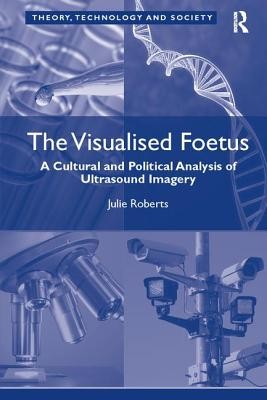
- We will send in 10–14 business days.
- Author: Julie Roberts
- Publisher: Routledge
- ISBN-10: 1138108014
- ISBN-13: 9781138108011
- Format: 15.6 x 23.4 x 1 cm, softcover
- Language: English
- SAVE -10% with code: EXTRA
Reviews
Description
The latest three- and four dimensional images produced by modern ultrasound technology offer strikingly realistic representations of the foetus - representations that have further transformed experiences of pregnancy, the public understanding of foetal existence and the rhetoric of the abortion debate. Presenting a timely feminist engagement with this new technology, The Visualised Foetus explores the widespread familiarity with and popularity of this new technology within the context of a longer history of foetal visualisations. The book offers an array of case studies that examine the diffusion of 3/4D ultrasound images beyond the clinic and the implications of this new technology for biopolitics in the European and American context. With attention to the non-diagnostic and commercial use of 3/4D images, the impact of 3/4D ultrasound within the abortion debate, and new claims that ultrasound aids maternal-foetal bonding, The Visualised Foetus demonstrates the tension between the social and medical significances of foetal ultrasound, the pleasures and dangers of foetal imagery for women, the contested status of ultrasonography as 'scientific' imagery, and struggles over the authority to define and interpret ultrasound imagery. As such, it will appeal to scholars of the sociology of medicine and the body, social theory and gender and cultural studies, as well as those with interest in science and technology studies.
EXTRA 10 % discount with code: EXTRA
The promotion ends in 20d.18:48:49
The discount code is valid when purchasing from 10 €. Discounts do not stack.
- Author: Julie Roberts
- Publisher: Routledge
- ISBN-10: 1138108014
- ISBN-13: 9781138108011
- Format: 15.6 x 23.4 x 1 cm, softcover
- Language: English English
The latest three- and four dimensional images produced by modern ultrasound technology offer strikingly realistic representations of the foetus - representations that have further transformed experiences of pregnancy, the public understanding of foetal existence and the rhetoric of the abortion debate. Presenting a timely feminist engagement with this new technology, The Visualised Foetus explores the widespread familiarity with and popularity of this new technology within the context of a longer history of foetal visualisations. The book offers an array of case studies that examine the diffusion of 3/4D ultrasound images beyond the clinic and the implications of this new technology for biopolitics in the European and American context. With attention to the non-diagnostic and commercial use of 3/4D images, the impact of 3/4D ultrasound within the abortion debate, and new claims that ultrasound aids maternal-foetal bonding, The Visualised Foetus demonstrates the tension between the social and medical significances of foetal ultrasound, the pleasures and dangers of foetal imagery for women, the contested status of ultrasonography as 'scientific' imagery, and struggles over the authority to define and interpret ultrasound imagery. As such, it will appeal to scholars of the sociology of medicine and the body, social theory and gender and cultural studies, as well as those with interest in science and technology studies.


Reviews